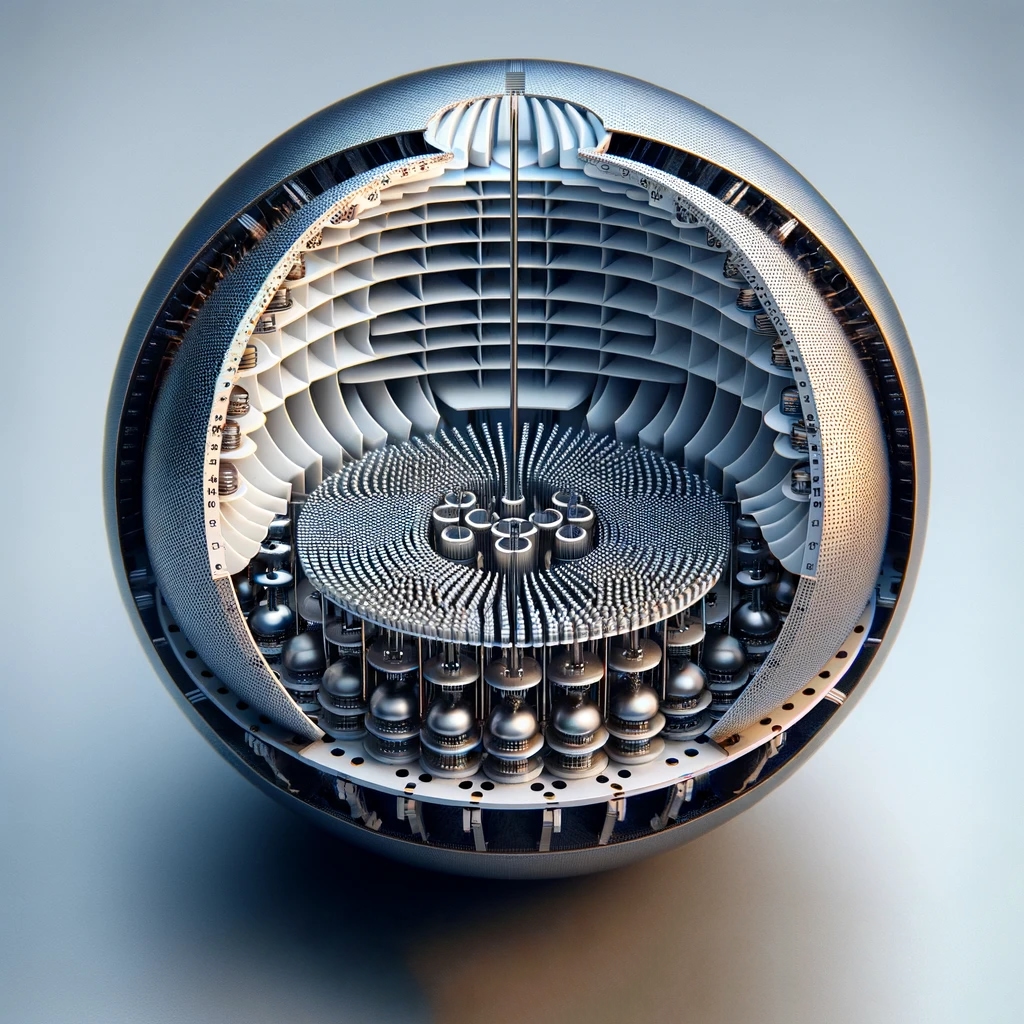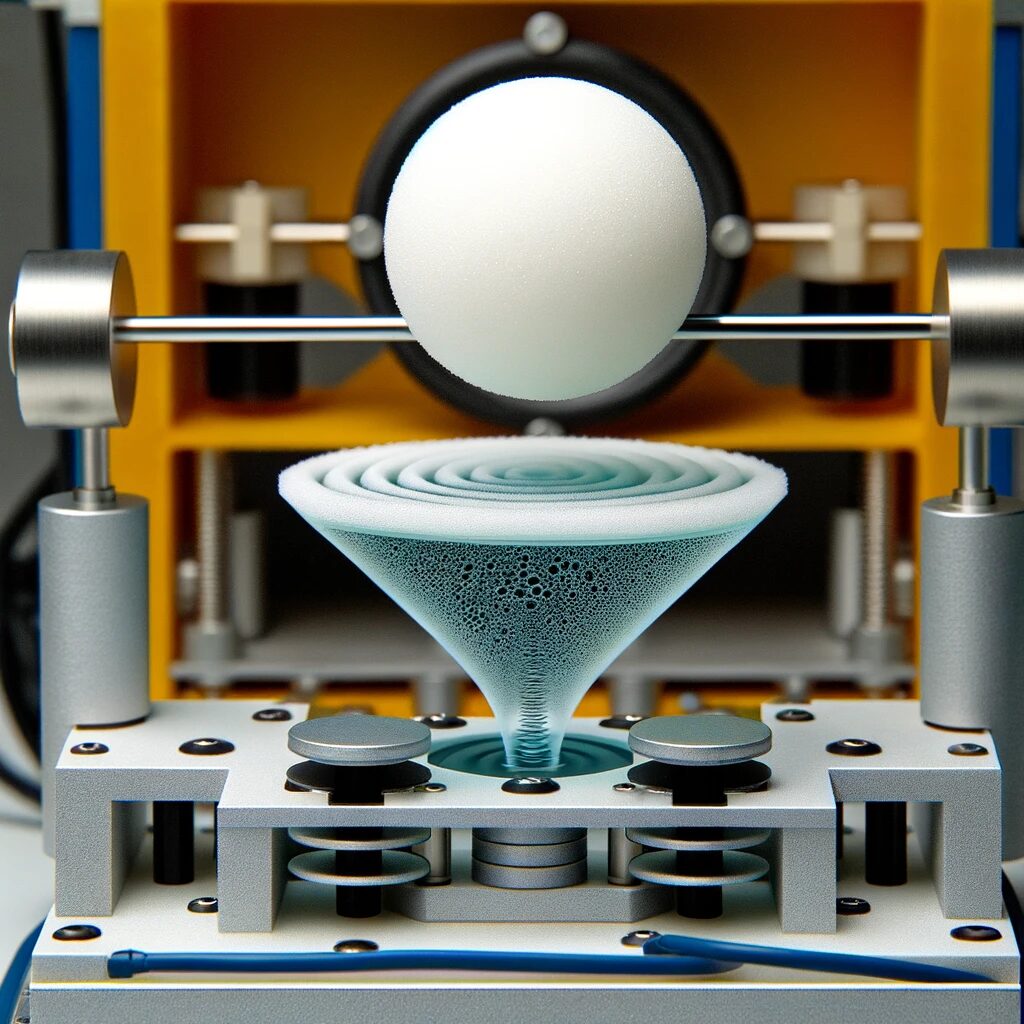Imagine you’re on the International Space Station (ISS), floating in the weightlessness of space. Up here, things don’t fall to the ground because there’s no “up” or “down.” That’s what we call microgravity. Now, let’s do something really cool with this environment – let’s use sound to make things float!

What is Acoustic Levitation?
Acoustic levitation is like using an invisible hand made of sound to hold things in the air. We use speakers (but super powerful ones) to create sound waves so strong that they can actually lift small objects or drops of liquid.
A Fun Experiment in Space:
Let’s say we want to understand how oil and water mix in space. On Earth, because of gravity, oil floats on water. But in space, things are different.
The Setup:
- Our Space Lab: We’re on the ISS with our acoustic levitation device. It’s like a mini concert stage for droplets, with speakers pointing at each other.
- The Stars of the Show: We have tiny droplets of oil and water.
What Happens:
- Action!: We turn on the device, and it creates a sound that’s like an invisible net. It catches the droplets and holds them in the middle of this sound net.
- Mixing Without Gravity: We let the oil and water droplets meet in this sound net. Without gravity pulling them apart, we watch how they behave. Do they dance around each other, mix, or just ignore each other?
- Changing the Tune: We play around with the sound (like a DJ with their music). We see if changing the sound makes the droplets mix differently.
Why Do This?
- Space Chef Secrets: Understanding this can help us know more about mixing stuff in space. Think about cooking but in space!
- Space Pharmacy: It’s super important for making medicines in space. Imagine a space pharmacy where medicines mix better because there’s no gravity.

The Cool Part:
This experiment helps us learn how things that usually don’t mix well (like oil and water) behave when they’re not being pulled down by gravity. It’s like discovering a new way to mix ingredients for space recipes, whether it’s for food, medicine, or even cool space materials!
So, acoustic levitation in space is like being a cosmic DJ, using sound to make tiny drops of liquids float and dance, helping us learn how to mix things in ways we can’t do on Earth. Pretty amazing, right?
Principles:
- Sound Waves: Sound is a mechanical wave that travels through a medium like air or water. It consists of regions of compression and rarefaction, where air particles are pushed together and pulled apart, respectively.
- Standing Waves: Acoustic levitation usually uses standing waves. A standing wave is formed when two waves of the same frequency travel in opposite directions and interfere with each other. This creates points called nodes, where there is no movement, and antinodes, where the movement is maximum.
- Pressure Differences: In acoustic levitation, an emitter and a reflector create a standing wave. The nodes and antinodes in this standing wave generate a pattern of high and low pressure regions in the air.
Levitation Process:
- Positioning Objects: Small objects are placed at the nodes of the standing wave. This is because the air pressure at these nodes is stable compared to the fluctuating pressure at the antinodes.
- Balancing Forces: The object at the node experiences an upward force from the higher pressure below and a downward force from the lower pressure above. These forces balance out, effectively counteracting gravity and causing the object to levitate.
- Size and Density: The size and density of the object are crucial. Generally, lighter and smaller objects are easier to levitate acoustically. The frequency of the sound waves also needs to be tuned according to the size of the object.
Applications:
- Material Science: It’s used for experiments in material science, particularly in situations where contact with a container might contaminate the material or affect its properties.
- Pharmaceuticals: Acoustic levitation can aid in studying the properties of drugs and chemicals without the risk of contamination.
- Space Research: It simulates microgravity conditions, useful for space research.
Limitations:
- Size Limitation: Only small objects can be levitated using this method. The larger the object, the more difficult it is to levitate due to the need for precise sound wave manipulation. Some studies have achieved levitation on particles up to 4.6 mm like the white paper below
- Energy Intensive: It requires a significant amount of energy to generate the necessary sound waves.
Acoustic levitation is a remarkable example of how fundamental physics principles can be applied to create seemingly gravity-defying effects. This technology continues to evolve, offering potential for new applications and research opportunities.
(White paper published by Nadia Weronika Brzostowicz see here )

